IJCRR - 4(18), September, 2012
Pages: 54-59
Date of Publication: 29-Sep-2012
Print Article
Download XML Download PDF
CYTOGENETIC EFFECT OF PHYTOPESTICIDE AGAINST LEPIDOPTERAN PESTS
Author: Maria Packiam S, Elumalai K, Ignacimuthu S
Category: General Sciences
Abstract:The present investigation aims to assess the cytogenetic effect of PONNEEM, a newly prepared botanical pesticide against the fourth instar larvae of Spodoptera litura Fab. PONNEEM exhibited spectacular changes in the morphological structure of chromosome of S. litura at 10 ppm concentration. The various karyomorphological changes namely metaphase plates showing clumping of chromosome, dots chromosome, endo reduplication, ploidy and deletion of chromosome were observed. This is the first report on the cytogenetic effect of PONNEEM against fourth instar larvae of S. litura. The severe damage on chromosome of S. litura was noticed due to the synergistic effect PONNEEM consisting of pongam and neem oils. So, this effective botanical pesticide which is safe and eco-friendly can be used as an alternative to chemical pesticides to control lepidopteran pests.
Keywords: Spodoptera litura, PONNEEM, Karyomorphology, Ploidy, Cytogenetic
Full Text:
INTRODUCTION
Karanjin which is the active principle obtained from the plant Karanj or Pungam tree.[1] More than 19 biologically active components have been identified from this plant. Karanj is reported to be effective in controlling insect pests of stored grains, field [2] and plantation crops. It acts as oviposition deterrent or antifeedant or insecticide [3] against insect pests [4]. Neem tree is a versatile tree containing large number of chemicals and biologically active compounds. At present more than 100 triterpenoids and a few non-isoprenoid constituents like phenolics, carbohydrates and proteins and sulphur compounds have been isolated from neem tree. Azadirachtin A was the first member isolated by Butterworth and Morgan [5] from neem seeds showing the antifeedant and insect growth inhibitor effects on Schistoereca greagaria. Due to the presence of bitterness in different parts of neem tree, it has emerged as an important source as well as an alternative for the synthetic insecticides. It is known for its diverse effects like repellency, feeding deterrencey, oviposition deterrencey and growth inhibitory action on insect pests.[6] The combination of pungam and neem oils (1:1 ratio) was named as 'PONNEEM'. PONNEEM was patented (Indian Patent No. 204381) by the Entomology Research Institute, Loyola College, Chennai, Tamil Nadu, India) because of higher bioactivities against field insect pests [7] . This present investigation was aimed at finding the impact of 'PONNEEM' on the chromosomes of Spodoptera litura which is a polyphagous insect pest [8] damaging more than 120 plant species.
METHODOLOGY
Insect Rearing
Egg masses of Spodoptera litura were collected from groundnut field at Vellavedu village near Poonamallee, Chennai. The eggs were surface sterilized with 0.02% sodium hypochlorite solution, dried and allowed to hatch. After hatching the neonate larvae were reared on castor leaves till pre pupal stage and sterilized soil was provided for pupation. The pupae were collected from the soil and kept in oviposition chambers (40 x 25 x 25 cm). After adult emergence, cotton soaked with 10% (w/v) sugar solution with multivitamin drops was provided for adult moths to increase the rate of fecundity. Petioles of fresh castor leaves inserted in conical flask containing water (to avoid early drying of the leaves) were provided for egg laying. After egg laying, the egg masses were collected from the leaves and surface sterilized with 0.02% sodium hypochlorite solution, dried and allowed to hatch. The fourth instar larvae reared in the laboratory were used for the present study.
Preparation of PONNEEM
Pongum and neem oils were taken at 1:1 ratio in a stainless steel vessel with a stirrer and were stirred at 120 rpm for 10 minutes. Then 8% emulsifier and 1% stabilizer were added to the oils and again it was stirred at 120 rpm for 10 minutes. At last 0.123% Azadirachtin and 2% isopropyl alcohol were added and again it was mixed thoroughly by using a stirrer at 120 rpm for 10 minutes. Then PONNEEM was obtained [9,10] .
Chromosomal Analysis
The larval sex organs (ovary and testes) of 10 ppm PONNEEM treated and control larvae of S. litura were dissected out in 0.001% Colchicine solution and were left in the same solution for 2.5 hours and then they were transferred to hypotonic solution (0.45% sodium citrate solution). After 30 minutes, it was replaced by fresh hypotonic solution and kept at room temperature for 30 minutes. At the end of 30 minutes, the tissue was transferred to a clean dry slide and a drop of acetic acid: methanol (1:3) mixture was added and squashed for a minute. Then the slides were freezed on dry ice for 2-3 minutes, thawed and kept in glacial acetic acid for 30 seconds and subsequently air dried for 45 minutes. The air dried slides were stained in Giemsa, diluted 30 times in Sorrenson’s phosphate buffer having pH 6.8, for 15 minutes at room temperature and then excess stain was de-stained in double distilled water and then the slides were air dried. The air dried slides were observed on the next day (Murakami and Imai, 1974)[11]. The various chromosomal aberrations in treated larvae of S. litura were observed under the microscope.
RESULTS
Damage on chromosome of S. litura
Effect of PONNEEM at 10 ppm concentration against larvae of S. litura was apparent in view of its cytogenetic effects. Fourth instar larvae exposed to such concentration were screened for chromosomal aberrations. Results clearly revealed that PONNEEM had significant effect in altering the genetic constitution of the target insect pest carrying reduction in the growth of larvae when compared to the untreated larvae (Figure 1).
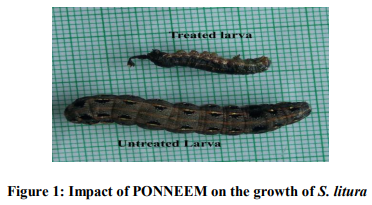
Chromosomal aberrations like clumping of chromosome (Figure 2: A), condensation into dots (Figure 2 : B) were seen. Many metaphase plates showed chromosomal variation in number, though they had distinct morphology (Figure 2: C & D). Ploidy was the common phenomenon observed in all the experimental larvae (Figure 2: F).
DISCUSSION
Fourth instar larvae exposed to such concentration of phytopesticidal formulation have been screened for chromosomal aberrations. Several damages on chromosomes of S. litura were observed at 10 ppm concentration of PONNEEM. Chromosomal aberrations like clumping of chromosome, condensation into dots were seen. Many metaphase plates showed chromosomal variation in number, though they had distinct morphology. The present finding coincides with the findings of Maheswaran and Ignacimuthu [12] who noticed that PONNEEM showed remarkable ovicidal activity of against human vector mosquitoes Aedes aegypti and Aedes albopictus. Similarly Packiam and Ignacimuthu [15] noticed that PONNEEM treated larvae of S. litura had reduced egg hatchability when they emerged into adults. In the present investigation, PONNEEM exhibited the damage on chromosome of S. litura because of the synergistic effect of active compounds like azadirachtin (Fig. 3) and karanjin (Fig. 4). In an earlier report, neem oil based formulation of active fraction of ethyl acetate extract of Hydnocarpus alpine showed antifeedant activity against S. litura [16]. Pavunraj et al., [17] reported that effective fraction from Melochia corchorifolia with 1:1 ratio of neem and pongam showed antifeedant activity against four lepidopteran pests.
CONCLUSION PONNEEM
produced high damage on the chromosome of S. litura. It was highly toxic to lipodopteran insect pests in which internal cells were damaged, Its normal growth was arrested due to its synergistic activity. This is the first report on the cytogenetic effect of PONNEEM against S. litura. This effective phytopesticidal formulation can be a safe and alternate to chemical pesticides. This is also good for integrated pest management programme in agriculture.
ACKNOWLEDGEMENT
Authors acknowledge the immense help received from the scholars whose articles are cited and included in references of this manuscript. The authors are also grateful to authors / editors / publishers of all those articles, journals and books from where the literature for this article has been reviewed and discussed.
References:
1. Venugopala Verma SR, Gupta SP, Tyagi GP. Studies on the toxicity of lindane on Colisa fasciatus. Part I. TML measurement and histopathological changes in certain tissues. Gegenbaurs Morp Jahrp Leipzic. 1975; 121(1):38-54.
2. Kumar V, Chandrashekar K, Sidhu OP. Efficacy of karanjin and different extracts of Pongamia pinnata against selected insect pests. J Entomol Res. 2006; 30:103–108.
3. Kabir KE, Islam F, Khan AR. Insecticidal effect of the petroleum ether fraction obtained from the leaf extract of Pongamia glabra Vent. on the American cockroach, Periplaneta americana (L.) (Dictyoptera: Blattidae). Int Pest Control. 2001; 43:152–154.
4. Mukesh Kumar, Ram Singh M, Kumar, Singh R. Potential of Pongamia glabra vent as an insecticide of plant origin, Biological Agriculture and Horticulture. 2002; 20:29.
5. Butterworth JH and Morgan ED. Investigations of the locust feeding inhibition of the neem tree Azadirachta indica. J Insect Physiol. 1968; 17:969-977.
6. Harikrishnan R, Rani MN, Balasundaram C. Hematological and biochemical parameters in common carp, Cyprinus carpio, following treatment for Aeromonas hydrophila infection. Aquacult. 2003; 221: 41-50.
7. The patent office journal dated on 19/05/2006, visited on 20/07/2012 at http://www.tmpsearchers.com/Patdatabase/20 06May19/pg_0021.htm.
8. Baskar K, Antony Raj G, Murali Mohan P, Lingathurai S, Ambrose T, Muthu C. Larvicidal and Growth Inhibitory Activities of Entomopathogenic Fungus, Beauveria bassiana against Asian Army Worm, Spodoptera litura Fab. (Lepidoptera: Noctuidae). Journal of Entomology. 2012; 9(3):155-162.
9. Packiam SM, Ignacimuthu S. Effect of PONNEEM on Spodoptera litura (Fab.) and Its Compatibility with Trichogramma chilonis Ishii. Braz Arch Biol Technol. 2012; 22: 291- 298.
10. Packiam SM, Baskar, K, Ignacimuthu S. Ovicidal activity of botanical oil formulations against Helicoverpa armigera Hubner and Spodoptera litura Fabricius (Lepidoptera: Noctuidae). Asian J Tropical Biomed (In press). 2012.
11. Murakami A, and Imai HT. Cytological evidence for holocentric chromosomes of Bombyx mori L. and Bombyx mandarina M. (Bombycidae), Chromosoma, 1974; 47(2):167-178.
12. Maheswaran R, Ignacimuthu S. A novel herbal formulation against dengue vector mosquitoes Aedes aegypti and Aedes albopictus. Parasitol Res. 2012; 110:1801- 1813.
13. Butterworth, J.H. and Morgan, E.D. 1968, Isolation of a substance that suppresses feeding of locusts. Chemical Commun. 23-24.
14. Vismaya, Sapna Eipeson W, Manjunatha JR, Sriniva P, Sindhu Kanya TC. Extraction and recovery of karanjin: A value addition to karanja (Pongamia pinnata) seed oil. Industrial Crops and Products. 2010; 32(2): 118-122.
15. Packiam SM, Ignacimuthu S. ibid.
16. Vendan SE, Lingathurai S, Paulraj MG, Ignacimuthu S. Bioefficacy of neem oil formulation with Hydnocarpus alpina leaf extract against Spodoptera litura. Int J Curr Res. 2010; 3:78-82.
17. Pavunraj M, Baskar K, Ignacimuthu S. Efficacy of Melochia corchorifolia L. (Sterculiaceae) on Feeding Behavior of Four Lepidopteran Pests. Int J Agric Res. 2012; 7: 58-68.
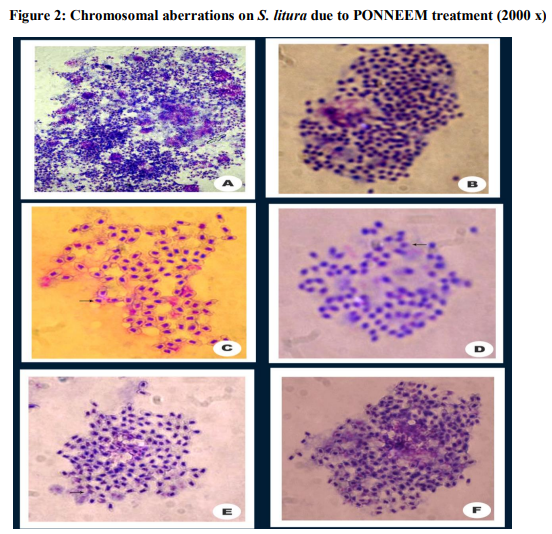
A. Metaphase plates showing clumping of chromosome
B. Photomicrograph showing dots chromosome, endo reduplication and ploidy nature
C. Metaphase plate showing rods and dots like chromosomes. Arrow indicates deletion of chromosome. Encircled chromosome indicates attachment of a fragment (addition of chromosome)
D. Metaphase plate showing rods and dots like chromosomes. Arrow indicates deletion of chromosome. Encircled chromosome indicates attachment of a fragment (addition of chromosome)
E. Ploidy Chromosomes with distinct morphology
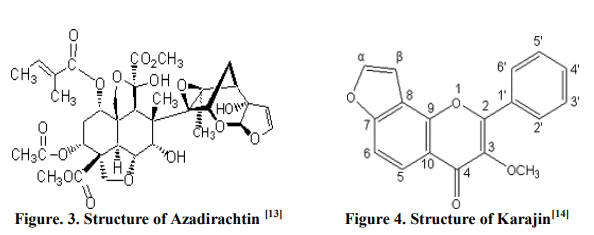
|
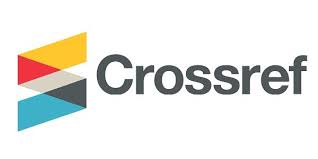



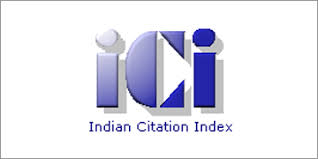

 This work is licensed under a Creative Commons Attribution-NonCommercial 4.0 International License
This work is licensed under a Creative Commons Attribution-NonCommercial 4.0 International License